The Timeless Fat: How To Store Lard Long-Term?
Lard—that creamy, white rendered pig fat that your great-grandmother probably swore by in her pie crusts and fried chicken recipes has made a comeback in recent years due to its exceptional flavor and versatile cooking applications or even a replacement for butter on your toast.
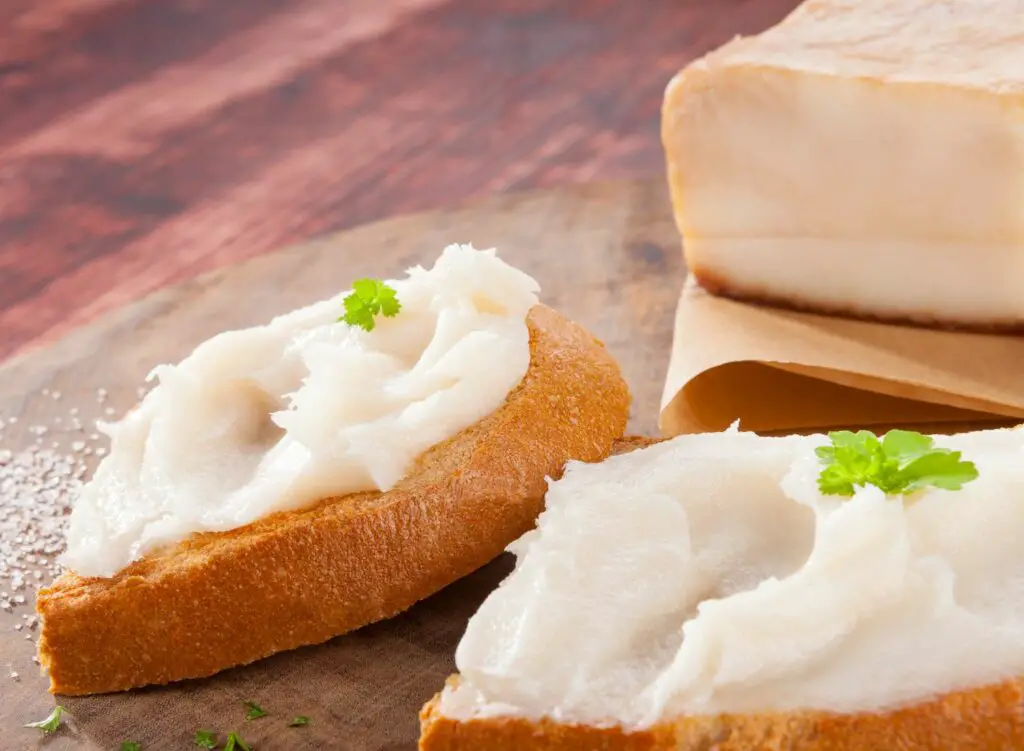
There’s just one little thing to consider. While lard boasts a relatively long shelf life, it doesn’t have the infinite staying power of some highly processed plant-based oils. But worry not! I’ve got the lowdown on how to store lard long-term.
Let’s get started, shall we?
Bite-Size Guide to Storing Lard:

- Keep it Cool: Lard likes it cold. Avoid hot places and sunlight.
- Use Airtight Containers: Use glass or stainless steel airtight containers to keep air out. Plastic containers can affect the taste.
- Refrigerate: Pop it in the fridge for a shelf life of over a year. This is perfect if you plan to use it fairly regularly.
- Freeze for the Win: For super long-term storage (over 2 years), freezing is your friend. Double wrap the lard in baking paper and then plastic before freezing. Or, freeze in ice cube trays and store in freezer bags for easy portioning.
- Stay Clean: Use clean utensils to scoop out lard. Bacteria from used utensils can make it go bad quicker.
- Canning Option: For room temperature storage, canning works well. Pour filtered lard into clean mason jars, wipe the rim, let it cool, and seal.
- Label and Date: It’s essential to label your stored lard with the date of preparation or purchase. This way, you can easily keep track of its freshness and ensure you use the oldest stock first. A simple label or marker on the container can help you stay organized and avoid any confusion.
- Use Small Containers: Consider storing your lard in smaller containers or jars, especially if you don’t use it frequently. This helps minimize air exposure when you open the container, preserving the quality of the remaining lard. Smaller portions also make it easier to thaw or use just the amount you need without repeatedly exposing the entire batch to air.
- Unrendered Piece of Pork Fat: It can be stored in the refrigerator for about one month before it starts to go bad. However, the quality may begin to deteriorate after a couple of weeks. For this reason, it is advisable to use it within two to three weeks for the best flavor and texture. Just make sure it is well wrapped up, or use a storage container.
- Sniff Test: If lard smells off or has a weird taste or color, it’s probably gone bad. Time to toss it.
To learn more about storing lard for the long-term, including additional tips and step-by-step instructions, keep reading the rest of the article. It provides more detailed insights to help you preserve the flavor and quality of your lard.
What is Lard?
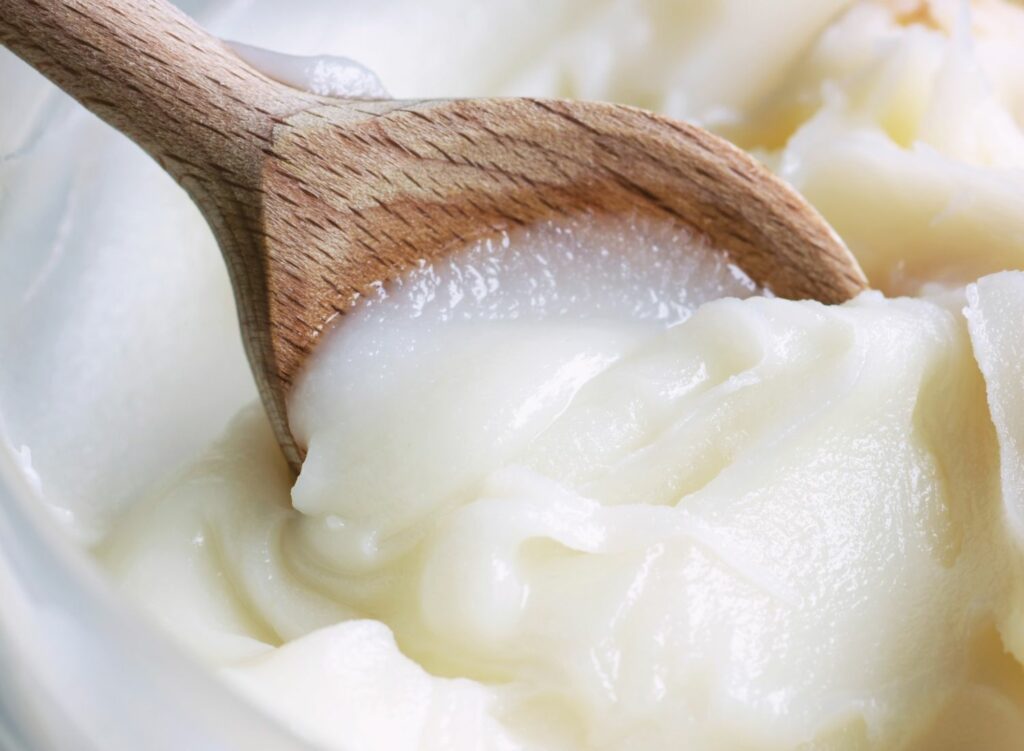
Lard is a smooth and thick fat that has a white or slightly yellow color. It’s made by rendering, carefully melting, and filtering the fat from a pig and getting rid of any water in it. This makes sure that the lard is all fat, with nothing else mixed in. Unlike a normal chunk of fat, lard has no other bits of meat or pieces in it – it’s just pure fat.
Simply put, making lard involves slow-cooking the animal’s fatty tissue until the fat melts and breaks away from the meat, tendons, or other tissues. Said fat then solidifies once chilled.
Did You Know? Along with beef tallow, lard has one of the highest smoke points among fats. This means it stays stable and doesn’t turn into harmful stuff (like oxidized compounds) when it gets hot. This is great news for your health! So, lard is your go-to fat for anything more intense than light sautéing, such as frying or searing.
Are there Different Varieties Of Lard?
While lard is basically melted and cleaned-up pig fat, it comes in several types, kind of like how steak has different cuts – from the fancy filet mignon that you might have on a special occasion to the more everyday sirloin that’s great for a weeknight dinner.
The special lard that bakers love is called “leaf lard.” It comes from the fat around the pig’s kidneys. It’s super smooth and white, doesn’t really taste like pork, and is great for making flaky pastries. But it can be a bit pricey.
The other kinds, which are easier on the wallet, come from the pig’s back (called “fatback”) and from the fat that wraps around the insides. These kinds can be slightly yellow and taste a little more like pork, but most people don’t notice the difference. It’s great for sauteing or frying.
So, in short, if you’re making something fancy like a pastry, leaf lard might be your best bet. For everything else, regular lard will do just fine!
If you’ve acquired some lard from the grocery store or rendered it yourself at home, knowing how to store it effectively for long-term use is essential. Proper storage is key to maintaining its freshness and quality.
Below, I will cover what are some of the factors that affect lard’s self-life and some practical tips and tricks to ensure your lard stays in prime condition for as long as possible.
Let’s get right into it!
Factors That Affect Lard’s Shelf Life

Good news—if you do everything right, your lard can last over two years and taste fresh and delicious. The bad news? Doing things wrong can make it go rancid within a month.
The difference between these scenarios lies in two crucial factors: exposure to elements like air and light and filtering.
Exposure to Elements
Although lard can hold its ground regardless of weather, colder is better. Fat breaks down the longer it is exposed to warm or hot temperatures, so avoiding sunlight, a warm kitchen, or other heat sources is your best bet.
Likewise, airflow can hurry oxidization, which breaks down the lard and makes it rancid.
Filtering
Tendon, water, or meat can spoil much faster than fat, so if you render some fat at home, filtering them out of the lard is essential.
Store-bought lard is always filtered, so you don’t have to worry. Likewise, it is also hydrogenated, which means they added hydrogen to the fat, making it much more stable and giving it longer shelf life.
How Do You Prepare Lard For Long-Term Storage?
While storebought lard comes already filtered and is thus ready for long-term storage, homemade lard has to be rendered and filtered manually.
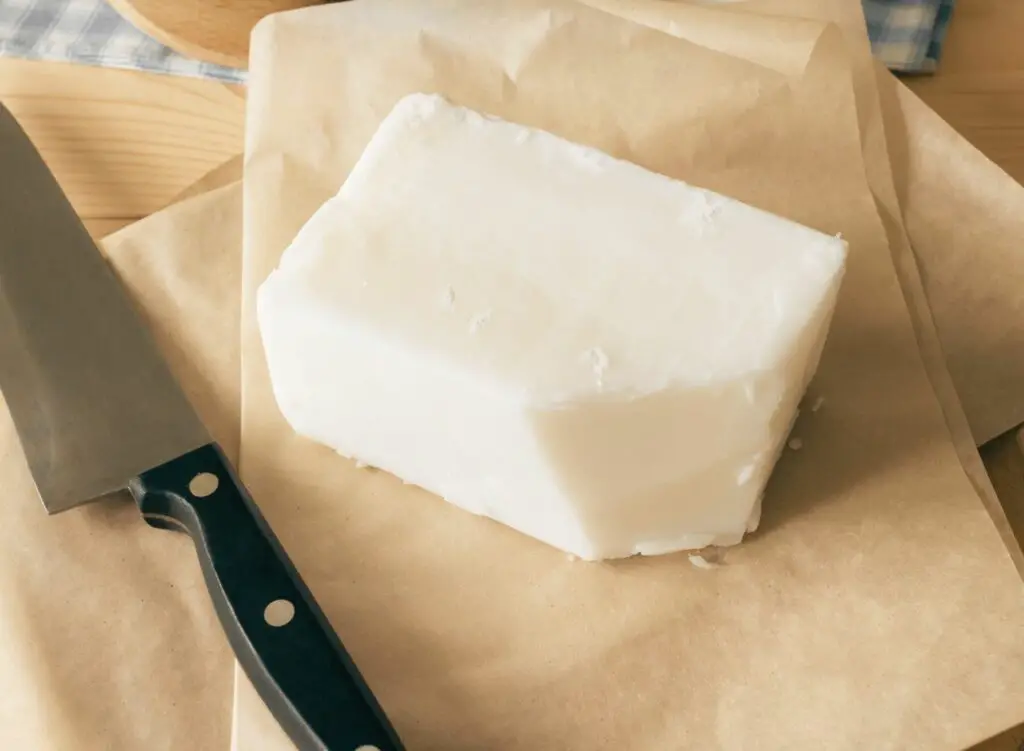
Luckily, rendering fat is a straightforward process, and doing it at home ensures you get the purest and freshest lard possible without any added trans fat or other hydrogenated oils that are sometimes added to comedically made lard.
Here’s a simple guide to help you render lard in your kitchen:
Rendering Lard at Home: Simple and Easy-to-Follow Instructions
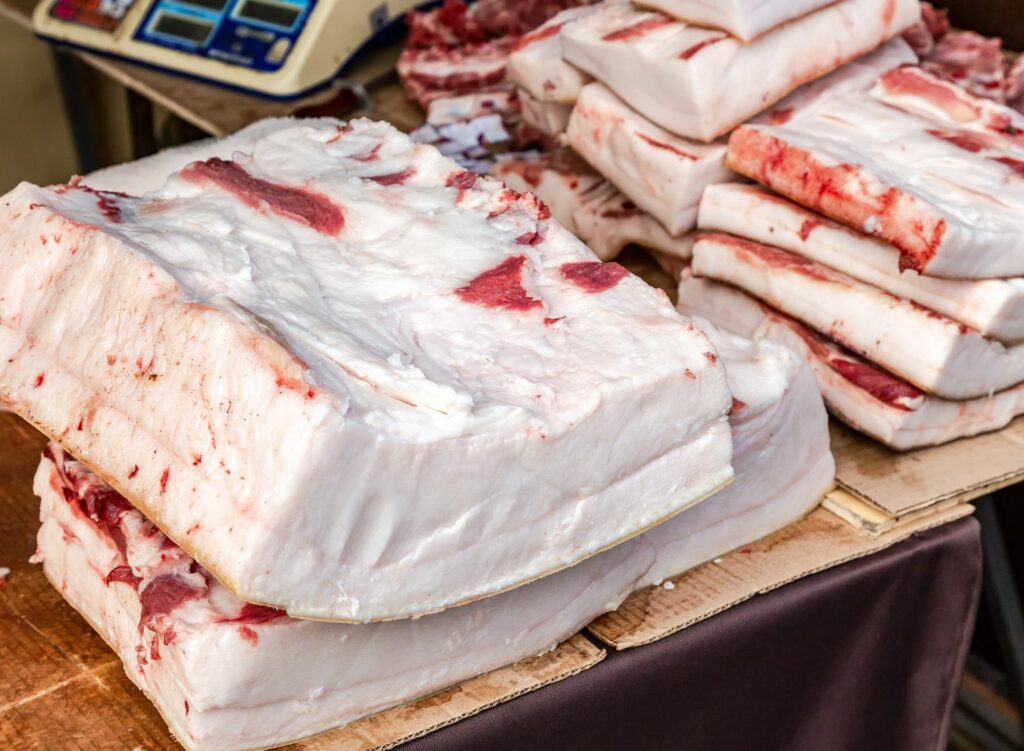
What You’ll Need:
- Pork fat (preferably from the back or around the kidneys and from pasture-raised pork from a local butcher).
- A sharp knife
- A large, heavy-bottomed pot, cast iron skillet, or slow cooker
- A metal strainer
- Long wooden spoon
- A cloth or cheesecloth
- A funnel
- Glass jars with lids for storing the lard
- Storage labels
- And optional, but super helpful, spatter guard.
Top Tip: Start Small with Rendering Lard! If you’re new to rendering lard, do it in small batches. It’s easier to manage and gives you better control over quality. Perfect for beginners, this approach leads to tastier, smoother lard.
Step-by-Step Instructions:
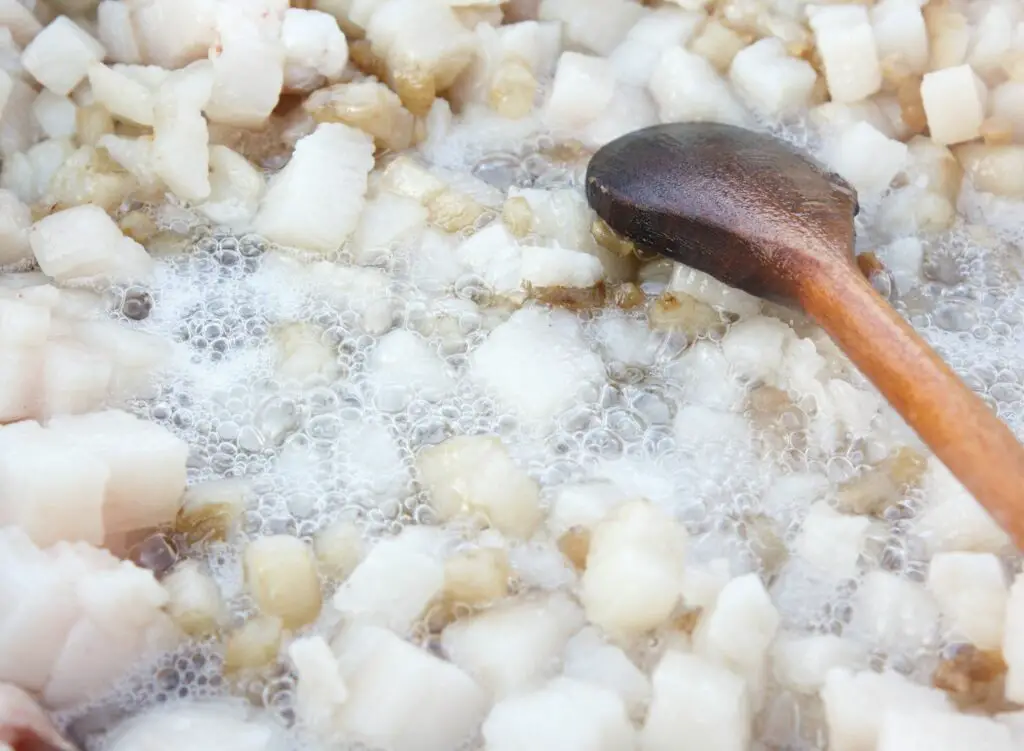
- Prep the Fat: Remove all the skin and red meat you can, then cut the pork fat into small, even-sized 1-inch or smaller squares. The smaller the pieces, the faster they will melt. If you have a lot of fat, you can also use a food processor or meat grinder to grind it into smaller bits.
- Melt the Fat: Place the pot on the stove and set it to the lowest heat setting. If you have a good size slow cooker for the job, set it to low. Add the pork fat to the pot or slow cooker. The key here is to melt the fat slowly, so be patient. Make sure to leave the lid off as you want the water/moisture to evaporate.
- Stir Occasionally: As the fat melts, you’ll want to stir it occasionally with a wooden spoon to prevent it from sticking to the bottom of the pot. This is especially important in the beginning stages.
- Monitor the Process: The fat will slowly turn into a liquid form, and you’ll start to see small crispy bits floating around. These are called cracklings. The rendering process can take several hours, so keep an eye on it, but you don’t need to hover.
- Strain the Lard: Once the lard is fully melted and the cracklings are golden brown, it’s time to strain it. Place a metal strainer over a large bowl, and line the strainer with a cloth or cheesecloth. I recommend using at least three layers. Carefully pour the liquid lard through the strainer. The cloth will catch the cracklings and any impurities.
- Transfer to Jars: Place a funnel over the opening of your glass jars. Pour the strained lard into the jars through the funnel. This will help prevent spills.
- Let it Cool: Allow the lard to cool down at room temperature. It will solidify and turn white as it cools.
- Store Properly: After the lard is cool, clean the jars’ top edges so carefully that nothing is left on them. Then, quickly put a lid on each jar, but use lids heated in hot water. This helps to close the jars really well and keeps the lard fresh.
Top Tip: Before pouring in the hot lard, place your jars in an oven for 15-20 minutes at 200°F (93°C). This step sanitizes the jars and prevents cracking due to sudden temperature changes when adding hot lard. A smart move for secure and clean canning!
Now, once you have your lard, here are some of the best ways to store it.
Best Methods – How To Store Lard Long-Term
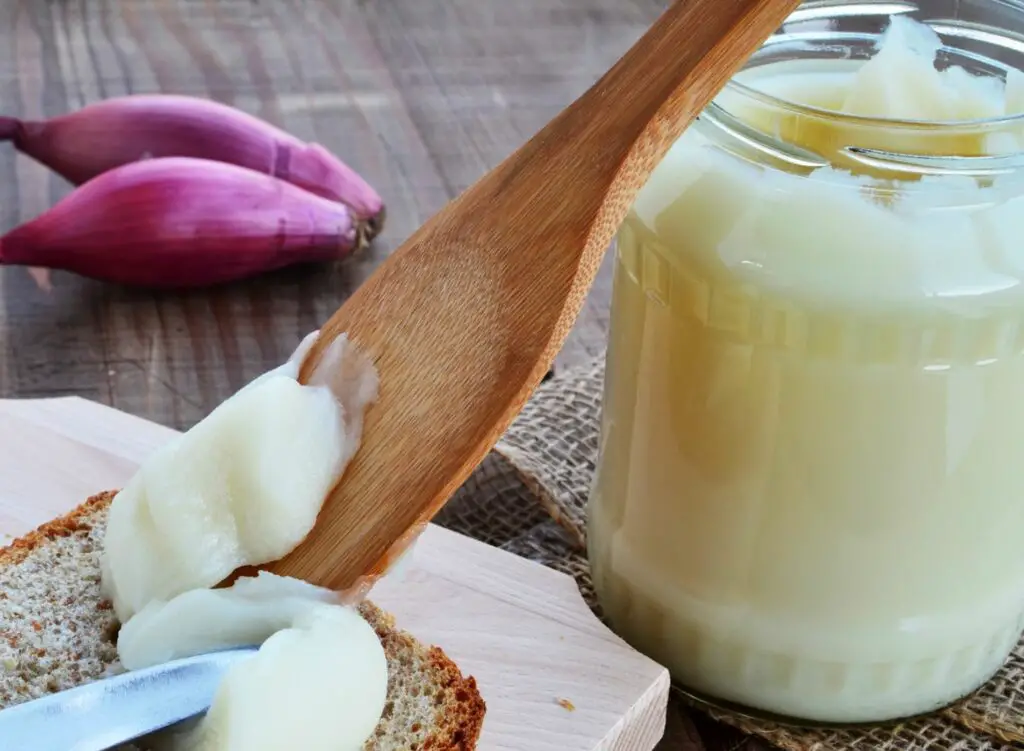
Although you can leave your lard on the kitchen countertop, storing it at room temperature in a regular container can shorten its lifespan from over two years to a few months.
If you want to avoid rancid lard, there are three better options: refrigeration, freezing, and canning.
Refrigeration
Fridges provide cool, stable temperatures year-round regardless of weather, which means fewer chances for the elements to get to your lard. On average, homemade filtered lard can last in the fridge for over a year.
Still, be sure to use an airtight container to protect the lard from the fridge’s air circulation and prevent it from absorbing other food’s scents.
Freezing
Frozen lard can last for over two years. However, you must protect it from moisture, humidity, and freezer burns—they are the mortal enemies of flavor and texture.
The best approach is to double-wrap the lard to isolate it—first with baking paper, then with plastic wrap. Afterward, you can save it in an airtight container or bag.
My husband’s favorite trick is to make lard cubes to take out before each use. Pour the lard into an ice cube tray and let it freeze for a day, then take them out and store them in a freezer-safe bag.
Canning
Canned lard at room temperature can last for over six months, but the number goes up well over two years in the fridge.
Fortunately, the procedure is straightforward and efficient.
- Begin by warming your clean, dry mason jars in an oven for 20 min, set at 200°F (93°C). Concurrently, have the lids immersed in boiling water.
- Once the jars are warm, promptly pour the filtered lard into them.
- Wipe the rims meticulously with white vinegar to ensure a clean surface.
- Allow the lard to cool down completely.
- After it’s chilled, take the lids straight from the boiling water, secure them onto the jars, and tighten the rings.
This process ensures both cleanliness and an airtight seal, essential for preserving the quality of the lard.
Tips and Tricks for Lard Storage
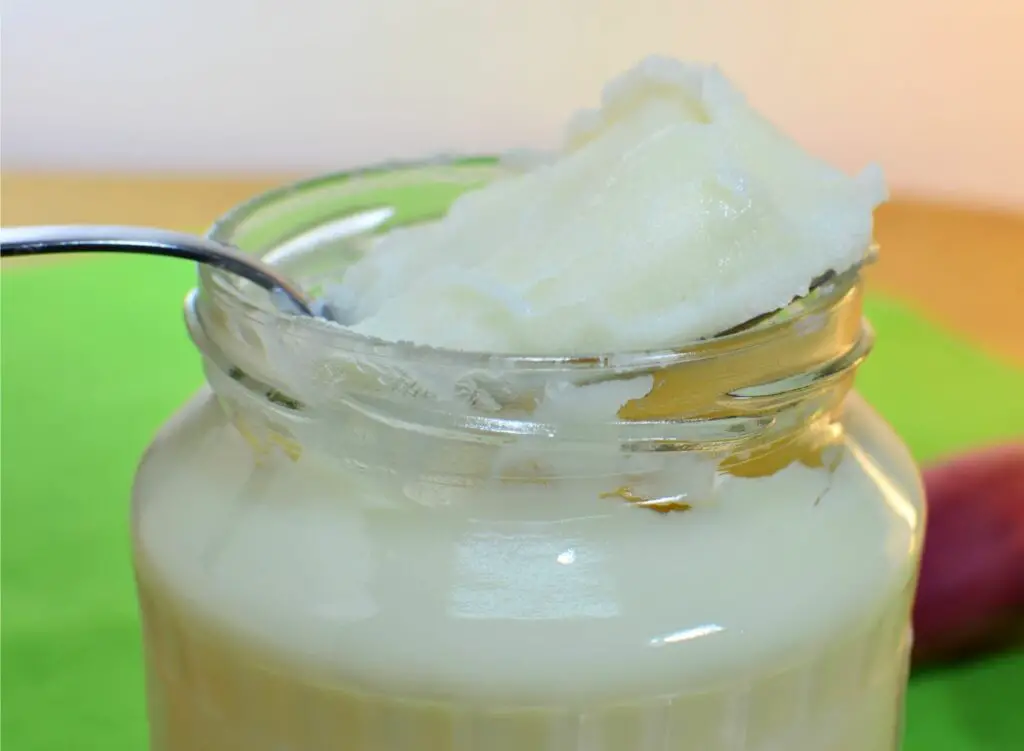
While proper storage practices are the best way to ensure your lard has a long shelf life, there are other things you can keep in mind.
- Glass or stainless steel containers are better than plastic ones. Long-term plastic storage can sometimes give lard a strange aftertaste.
- Use clean utensils whenever you scoop out the lard since double-dipping can introduce bacteria and accelerate spoilage.
- Try to keep your lard at a stable temperature. That means avoiding re-heating and re-freezing repeatedly.
- Be sure to label your stored lard with the preparation or purchase date. This helps you track freshness and prioritize using the oldest stock first. A simple label or marker on the container keeps you organized and eliminates any confusion.
Thawing Frozen Lard

When it comes to defrosting and thawing frozen lard, there are a few key tips to ensure its quality remains intact.
Here’s what you need to know:
- Gradual Thawing: The best approach is to thaw frozen lard slowly in the refrigerator. Place the container of frozen lard in the fridge for several hours or overnight until it completely thaws. This gentle thawing process helps maintain its texture and flavor.
- Portion Control: If you only need a small amount of lard, consider dividing it into smaller portions before freezing. This way, you can thaw only the amount you need for a particular recipe, avoiding repeated thawing and refreezing of the entire batch.
- Avoid Microwaving: I generally don’t recommend thawing lard using a microwave as it can lead to uneven thawing and potential overheating. Microwaving can compromise the texture and quality of the lard, so it’s best to stick with gradual thawing in the refrigerator.
By following these tips, you can safely thaw frozen lard while preserving its quality for your culinary endeavors.
Signs of Spoiled Lard
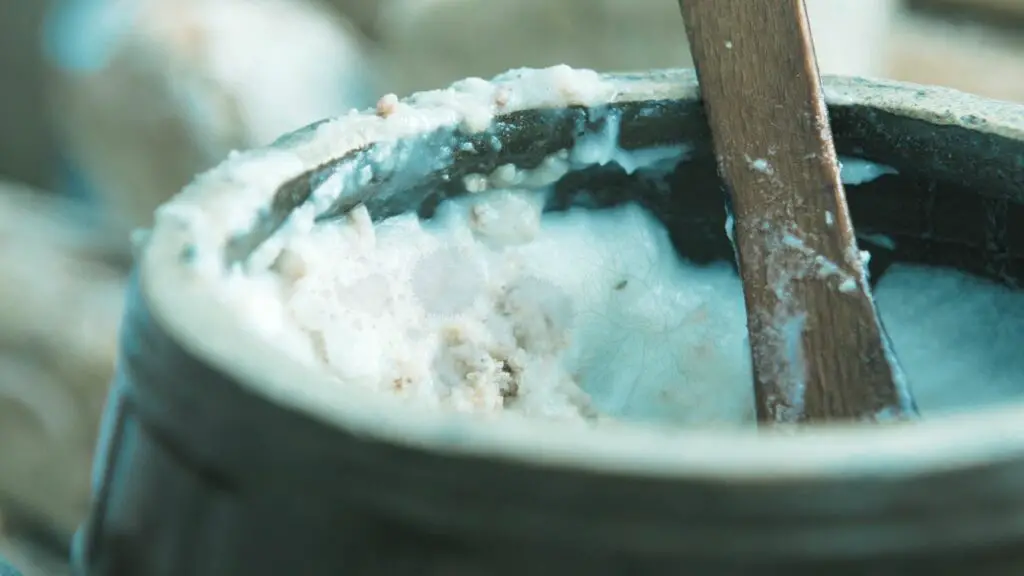
Lard can be long-lasting and remain fresh for two years or even longer, but even the perfect storage method isn’t infallible.
Odds are your lard is spoiled or otherwise contaminated if:
- Smell: Fresh lard has a clean, slightly meaty smell. If the lard smells sour, rancid, or just off, it’s probably spoiled.
- Color: Good lard is usually white or slightly yellowish. If it has turned darker or gray or has any odd discolorations, that might be a sign it’s gone bad.
- Texture: Fresh lard should be creamy and smooth. If it’s lumpy, sticky, or has a strange texture, it might be spoiled.
- Taste: If you’re still not sure, you can taste a tiny bit. If it tastes very different from when it was fresh, like it’s bitter or stale, don’t use it.
- Mold or Spots: If you see any mold or spots that don’t look normal, that’s a sure sign it’s spoiled. However, if you notice any mold on the lard, it’s likely due to insufficient rendering time or improper straining during preparation.
Remember, when in doubt, throw it out. It’s better to be safe than to risk using bad lard in your cooking.
Nonetheless, spoiled lard is a rare sight. By following all the tips and tricks I’ve shared, the odds are that you’ll finish your entire batch without a hitch!
Frequently Asked Questions
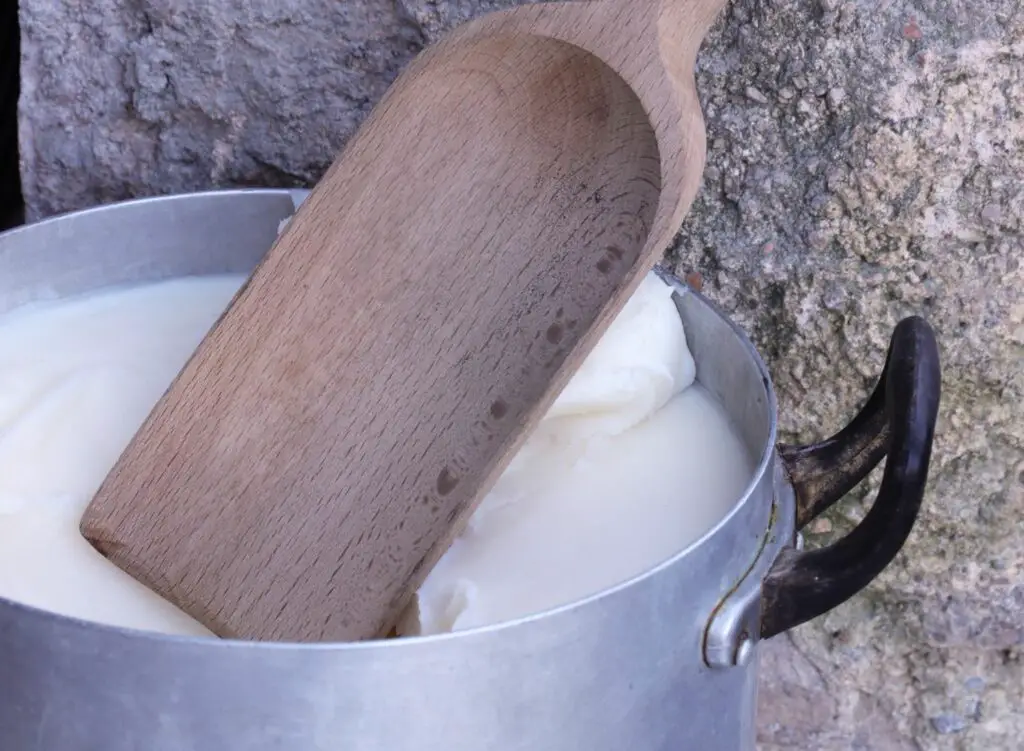
Can lard be stored at room temperature?
While lard can be stored at room temperature in the pantry or cupboard, it is recommended to refrigerate or freeze it for longer shelf life and to maintain its freshness. Lard can last for several months when stored at room temperature.
How long can lard be stored in the refrigerator?
Properly stored lard can last well over a year in the refrigerator. Ensure it is stored in airtight containers to minimize air exposure.
Can I reuse lard after cooking with it?
Yes, you can use lard 2-3 times if it is filtered after cooking and not overheated. Just make sure you strain and store the leftover lard in a clean container. However, be mindful of the number of foods you reuse to avoid unwanted flavors.
Can lard be stored in plastic containers?
While lard can be stored in plastic containers, it is generally recommended to use glass or stainless steel containers. Plastic containers may absorb odors and affect the taste of the lard over time.
Can I store the lard in the original packaging it came in?
If it’s not an airtight glass jar, then transferring lard from its original packaging into airtight glass containers for long-term storage is better. The original packaging may not provide adequate protection against air or moisture.
Can I store flavored or infused lard long-term?
Flavored or infused lard should be stored similarly to regular lard. However, it is important to note that the flavors may intensify over time, so it’s best to use flavored or infused lard within a reasonable period for optimal taste.
Should I add salt to the lard to make it last longer?
Adding salt to lard does not significantly affect its shelf life. Salt is not a preservative for lard and does not provide the same preserving properties as it does for other food products. Proper storage methods, such as refrigeration or freezing, are more effective in extending the shelf life of lard. It is advisable to store lard in airtight containers and follow recommended storage guidelines for optimal freshness and longevity.
Is lard a good survival food?
Lard is a valuable survival food due to its high-calorie content and long shelf life. It is rich in fat, which provides energy and is essential for survival. Lard can be used for cooking, frying, and baking, making it versatile in preparing meals. Properly stored lard can last a considerable period, making it a valuable resource in emergencies or survival scenarios.
Read Also: Super Easy Way To Make Clarified Butter Without Cheesecloth!
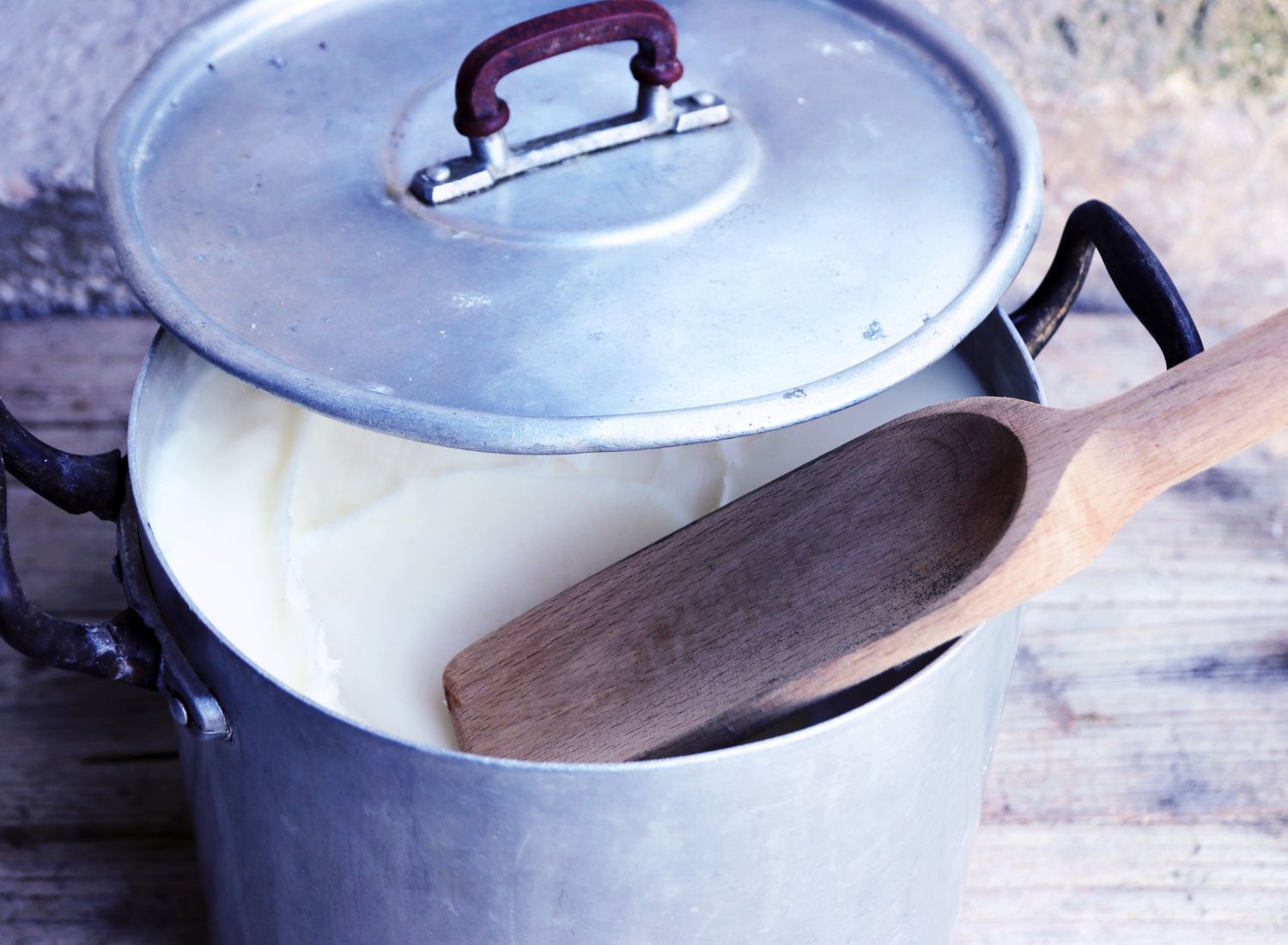
I fun rendered lard has been in the freezer for two years is it still okay to render and use?
If the lard has been in the freezer for two years and stored well, it might still be okay. Just give it a sniff—if it smells sour or weird, it is time to throw it out. Check how it looks too. If there is freezer burn or it seems off, it might not be great, but you can re-render it to see if it freshens up. If you are unsure, it is better to toss it.